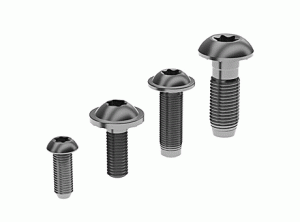
Not all screws require a predrilled hole with internal mating threads. Some of them are capable of creating their own mating threads. Known as self-tapping screws, they are commonly used in the manufacturing industry. Manufacturing companies can quickly assemble parts by using self-tapping screws.
Self-forming screws are classified as self-tapping screws. Like all self-tapping screws, they don’t require mating threads. Rather, self-forming screws will create or “form” their own mating threads.
The Basics of Self-Forming Screws
Self-forming screws are threaded fasteners that create their own mating threads during installation. Like all screws, they feature a head that’s connected to a threaded shank. The shank has external threads. When driven into a workpiece, self-forming screws will create their own mating threads.
Other types of screws may require a predrilled hole. You’ll have to drill a small hole in the workpiece beforehand, after which you can drive a screw into it. Self-forming screws use an alternative design that eliminates the need for a predrilled hole.
Benefits of using self-forming screws include:
- Faster and easier installation
- Self-locking
- Ensures the mating threads match the external threads
- Available in countless sizes
How Self-Forming Screws Work
Also known as thread-forming screws, self-forming screws work by using rigid, high-precision external threads to create their own mating threads. All screws have external threads on their respective shank. The external threads on self-forming screws, though, are designed specifically to create mating threads in workpieces. As you drive a self-forming screw into a workpiece, it will create mating threads in the workpiece.
Most self-forming screws displace the material with which they are used. You can drive them into aluminum, for instance. Self-forming screws will push out the aluminum material while subsequently creating their own mating threads.
Self-forming screws aren’t the same as thread-cutting. Thread-cutting screws will typically remote the material with which they are used, whereas self-forming screws will displace the material with which they are used.
Thread-cutting screws remove material in the form of chips. Chips consist of pieces of waste material that are created as a byproduct. As you drive a thread-cutting screw into a workpiece, material from inside of the workpiece will be pushed out from around the screw’s head. Self-forming screws generally don’t remove material. Instead, they displace material.
In Conclusion
While some types of screws require a predrilled hole with mating threads, self-forming screws do not. They will create their own mating threads during installation. Self-forming screws feature high-precision external threads that will create matcing mating threads in workpieces.
